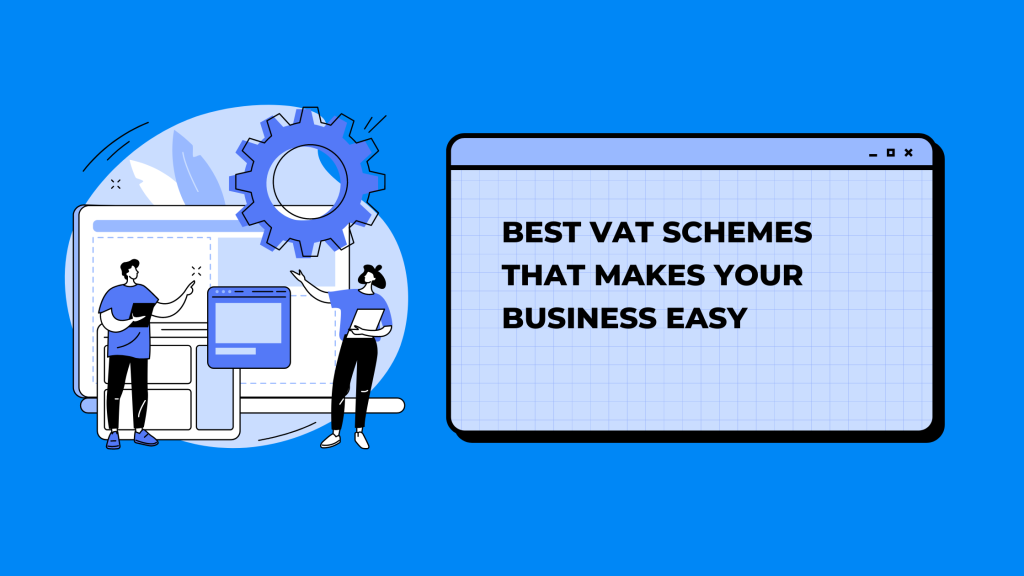VAT SCHEMES

If you’re looking for the best vat schemes that make your business easy to operate and you can run it without any legal issues or hassle. So, hold your seat belts as you gonna see some of the best vat schemes that you can choose without any delay.
To make the vat schemes more convenient, you’ll see the top best 5 UK vat schemes that you or your business can opt-in for.
So without wasting any more time, let’s get started!
CHOOSING VAT SCHEMES FOR YOUR BUSINESS
When you complete your registration steps for VAT, then you’ll receive your VAT business certification, which will verify your business is good, too and registered for VAT. Now you will require a system to inform HMRC how much VAT you’ve paid, which is known as output tax, and you’ve charged, which is input tax.
There’re many VAT schemes (listed below), and we tried to explain them as possible as we could.
RETAIL & VAT MARGIN
VAT retail or margin schemes tax is the difference between the item you sold for it and what you paid, rather than selling it at the total price. You pay VAT at 16.67% of the absolute difference.
You select to use a margin scheme when you sell:
- collector’s items like coins or sculptures
- antique items
- any work of art
- any second-hand product or goods
While you can’t use a margin scheme for these:
- precious/costly stones
- investment gold
- precious/expensive metals or ores
- An item that you bought and you were charged VAT on it
Furthermore, multiple different retail schemes can simplify the process of VAT. You can use this scheme based on your turnover of retail. There are a few popular other schemes for businesses that have a turnover of or under 1m, between 1m and 130m, and for those businesses that have high retail turnover.
In a few cases, small-level businesses can use a retail scheme along with annual account and cash accounting.
There are many legalities and technicalities surrounding or around VAT, so its recommended that you should seek an expert of a professional accountant. They can tell or advise you which VAT scheme is better for your business and can answer any of your queries or question.
FLAT RATE SCHEME
This scheme works simply like a flat rate VAT scheme and is one of the vat schemes that let you pay a percentage of your total last 12-month turnover as VAT. There is an advantage to using this scheme, as you only pay the difference between the actual VAT that you are charging and any VAT you get paid.
Many different types of businesses are required to pay lower and higher flat rates of VAT, depending on the type of business you’re running. You can easily find out what flat VAT your business gonna pay on the .gov website. However, it would be best if you still charged VAT on your invoices, but every purchase or sale doesn’t have to be logged by you.
This scheme is only valid for smaller businesses with a per annum turnover of £150,000 or less. With this flat VAT rate scheme, the only input VAT you can manage to claim expenditure of VAT inclusive of £2,000 or greater.
REGULAR METHOD
VAT registered businesses, in the majority, keep a good record of purchase and sale transactions. This vital information can be saved in a logbook typically, or new modern companies keep them in different software or digitally.
There are different accounting software’s that offer you more reliable options to handle all the hefty work and heavy lifting of keeping every log in one place.
When the quarter is over, these records can be filled in your VAT return, and you’ve to pay any VAT due.
However, in some cases, when you paid a large amount of output tax, you can avail of the option to claim back a predefined amount of VAT you already paid, and after that, you can receive a VAT refund.
ANNUAL SCHEME
The annual account VAT scheme is the same as the standard VAT accounting method. However, in this scheme, you don’t have to pay or file quarterly VAT returns. All you’ve to do is to file/pay your VAT accounts annually on your final annual VAT due date payment deadline.
To save time and simplify it, some small or large businesses pay their annual VAT return at the mentioned time, as do their corporation tax.
You can make quarterly payments for the VAT you owe to HMRC when your business’s final annual VAT return is filed.
The significant benefit of using a convenient VAT method is this it allows you to be more budget and time friendly, which can be a good advantage for any smaller business. This scheme is often considered to be a much better option for your business’s cash flow, especially if you trade on seasonal patterns or if your business’s turnover is increasing every year.
You may end up underpaying or over-paying your VAT bill in some cases. In that case, you might need to settling of the outstanding balance, or you can file for a refund of the VAT.
Point to ponder: Any business whose annual turnover of over £1.35m can’t use the annual accounting scheme.
CASH ACCOUNTING SCHEME
This cash account scheme is another alternative scheme of VAT calculation method which allows any small or large business to calculate or assume their actual Value Added Tax solely based on the payments that the company has received or made.
You can also do this by calculating your VAT, including the invoices sent to and received. You don’t have to pay HMRC VAT on the sales that are incomplete and paid by the customer using this cash accounting scheme. This can be helpful for businesses and can have a significant impact on cash flow.
Your business should have the original records of actual payment dates then you can use this VAT scheme successfully. Your business can be eligible for a cash account system if your final/annual taxable turnover is less than £1.35m. And if your final/yearly tax turnover is below £1.6m, you can use this scheme freely.
Also, you don’t need to go with HMRC to use this cash accounting scheme, and even you don’t have to inform or tell HMRC that you’re using this vat scheme.
